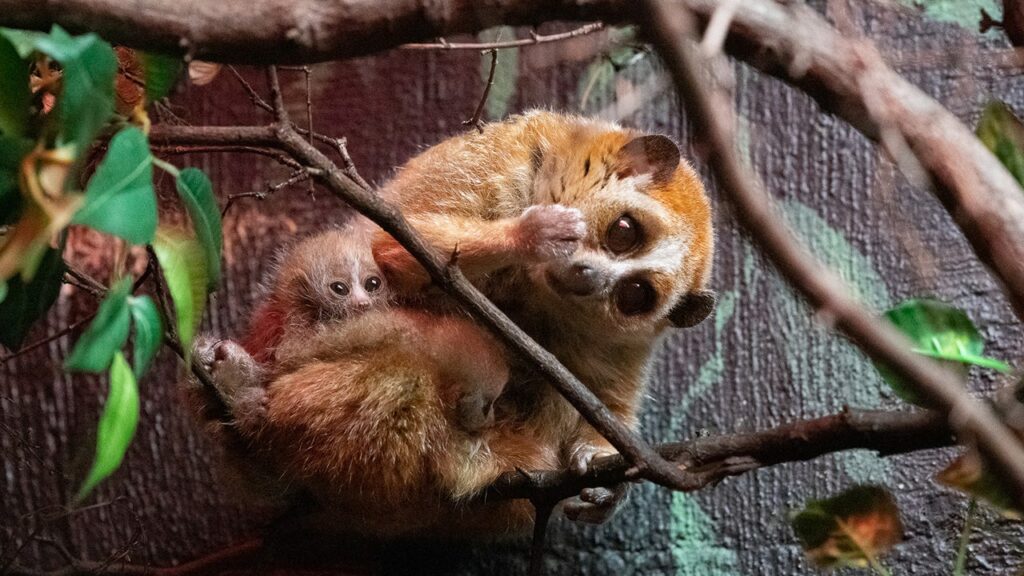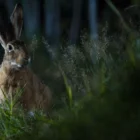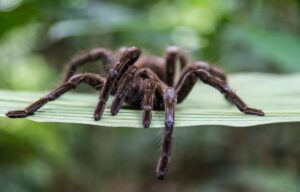Is the slow loris venomous?

Slow lorises, small primates native to Southeast Asia, have garnered attention for their unique features, one of which is the potential presence of venom. The topic of slow loris venom has intrigued researchers and animal enthusiasts for years, prompting studies and debates.
The Enigmatic Slow Loris
Nocturnal Nature
Slow lorises are primarily nocturnal creatures, displaying peak activity during the night. This nighttime behavior aligns with their evolutionary adaptations, aiding in their survival by allowing them to avoid daytime predators and hunt for insects, small vertebrates, fruits, and tree sap under the cover of darkness.
Their large, distinctive eyes offer excellent night vision, aiding them in navigating through the darkness and spotting potential prey. Moreover, their keen eyesight contributes to their efficient hunting for insects and small animals in the dimly lit forest environments.
Sluggish Movement
True to their name, slow lorises move at a deliberate and measured pace. Their slow movements serve as a camouflage strategy, helping them blend into their arboreal habitats. This gradual locomotion also assists in conserving energy, allowing them to stealthily navigate through the trees in search of food.
Unique Communication
Slow lorises engage in various forms of communication, such as soft calls and marking behavior through scent glands, particularly during social interactions and territorial demarcation. They also use distinct postures and facial expressions to convey messages within their social groups.
Social Behaviors
While primarily solitary creatures, slow lorises occasionally engage in social interactions, especially during the breeding season and while rearing offspring. Mothers typically care for their young until they are independent, fostering a strong maternal bond.
Venom in Slow Lorises
Slow lorises possess specialized brachial glands in their upper arms that secrete a toxic substance, which can be activated when mixed with saliva. This venomous secretion is used as a form of defense against potential threats, such as predators or adversaries within their habitat.
Activated by saliva
The composition of slow loris venom contains various compounds, including proteins and enzymes. However, the specific components and their exact effects are not yet fully comprehended.
One of the primary toxic elements identified in the venom is a protein similar to the allergen found in cat dander, which can elicit strong reactions in humans and potentially cause anaphylactic shock. When combined with saliva, this venom becomes activated, potentially causing a painful and noxious reaction if the slow loris bites or if the venom comes into contact with mucous membranes.
Research conducted on slow loris venom, led by prominent primatologists such as Anna Nekaris and her team, has provided valuable insights into this unique defensive mechanism. Investigations involving the effects of slow loris venom on human cell lines have contributed to understanding the potential impacts of this substance on various organisms, shedding light on its biochemical composition and possible effects.
Crucial for survival
The presence of venom in slow lorises plays a crucial role in their survival in the wild. This defense mechanism allows them to deter predators and threats, enhancing their ability to protect themselves and their offspring in their natural habitat. Understanding the unique nature of slow loris venom is also vital for their conservation, as it underscores the importance of protecting these animals and their habitat to maintain biodiversity.
In captive environments, the presence of venom in slow lorises poses ethical considerations regarding their care and handling. It emphasizes the need for responsible and informed practices to ensure the well-being of these creatures in captivity, avoiding unnecessary stress or potential harm caused by human interaction.
Research and References
Numerous scientific studies and research papers have contributed to understanding the slow loris venom. Studies led by primatologists such as Anna Nekaris have investigated the nature of the venom and its effects on potential predators and the slow lorises themselves.
These studies have provided valuable insights into the composition and potential effects of the slow loris venom, shedding light on the primate’s unique defensive mechanism.
The slow loris’ venomous nature is not only fascinating but also crucial for its survival in the wild. Understanding the presence of venom aids in the conservation of this species, highlighting the importance of its protection and ethical treatment in captive environments.










